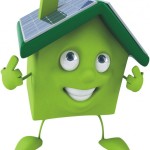Renewable energy comes in many forms. Depending on the application certain types of renewable energy work well. Most renewable energy sources work better in large scale commercial applications than they do for residential applications. For example hydroelectric can be used in small scale applications but its much more suitable as a commercial project. Fuel cells are expensive much more suitable in large scale installations. Below are several renewable sources with some brief explanations.
Solar hybrid lighting
Also known as passive solar lighting. The use of natural illumination from the sun instead of artificial lighting from conventional light bulbs. Solar hybrid lighting can reduce energy bills by collecting light from the roof of a commercial building and directing the light into the building using fiber optic cabling. It provides a healthy alternative to lighting commercial buildings while significantly reducing energy bills.
Solar hybrid lighting is a revolutionary new lighting technology that allows sunlight to be collected and used for interior building lighting. Solar hybrid lighting eliminates the disadvantages of conventional day lighting techniques while providing the benefits of natural lighting and the controllability and flexibility of electric lighting systems.
Using a roof-mounted solar collector, the collector will track the sun and concentrates direct sunlight into plastic optical fibers. The optical fibers transport sunlight throughout a building to multiple luminaries. Containing special optical elements that disperse the sunlight, these hybrid luminaries blend natural light with supplemental artificial light. During periods of limited sunlight, a photo sensor maintains a constant room illumination by adjusting the level of artificial lighting.
Hydroelectric turbines
Electricity produced by the flow of water and is used in many of our projects. It is used in both commercial and residential applications to significantly lower electricity bills.
Fuel cells
A fuel cell is an electrochemical energy conversion device. It produces electricity from external supplies of fuel. Their are several fuels available to power fuel cells. These fuels react in the presence of an electrolyte. Generally, the reactants flow in and reaction products flow out while the electrolyte remains in the cell. Fuel cells can operate continuously with very little maintenance as long as the necessary fuel flows are maintained. They provide power much like a small Honda portable gas generator but operate with zero to minimal emissions and without any noise.
Fuel cells are designed for larger communications backup power loads within the wireless and wire line telecommunications, utility and government sectors. For customers looking for less than 1000 Watts to 12,000 Watts of backup power, fuel cells can provide the flexibility and outputs needed for a variety of site requirements. Fuel cells can also be used to grid tied your home or business and provide electric power without any sound pollution or toxic emissions.
Net metering
A method of crediting customers for electricity that they generate on site in excess of their own electricity consumption. When connecting to grid power, customers with their own renewable generation offset the electricity they would have purchased from their utility. If such customers generate more than they use in a billing period, their electric meter turns backwards to indicate their net excess generation. With solar, excess electricity generated by PV systems flows back into the power lines for use elsewhere and the PV system owner is credited for the excess at retail prices.
Inverters
An inverter is an electronic device which takes the direct current from the solar cells and changes it to alternating current (AC). Most households run on AC because AC wiring is cheaper and safer than DC wiring. Inverters are made to convert from 12, 24, 48, 225, or 400 volts DC to 120 or 240 AC. The AC output of inverters is either a modified sine wave or true sine wave. Inverters for net metering systems have to meet IEE-929-2000 standards and be UL listed.
Power factor correction
Power factor correction is the process of adjusting the characteristics of electrical loads to increase power factor without altering the voltage or current. This is usually achieved by adding a reactive element in parallel with the load in order to increase unity. Power factor correction may be applied to electrical power transmission lines to improve the stability and efficiency of the transmission network or may be installed by individual electrical customers to reduce energy costs. In theory high power factor is generally desirable which can improve voltage regulation.
Currently most commercial and residential power factor devices do not reduce energy usage by much if any at all and many will actually use energy in the process. Until these devices are field tested you are better off purchasing new appliances before investing in a power factor correction device.
Batteries
Stand-alone solar electric systems use lead acid batteries to store power for cloudy weather or for night time use. Lead acid batteries can be made to withstand deep-cycling, this means discharging them to near-empty. They do not have any memory like NiCd’s do. If charged and maintained properly, good lead acid batteries will last for years. Large deep cycle batteries can last 10 to 15 years. Lithium-ion batteries are now being used to power our EVs and products.
Charge controllers
A charge controller is a solid state electronic device which measures the charge state of the batteries and turns the current from the PV cells on if the batteries need charging or off if they do not. This device protects the batteries from over-charging which can shorten their life.
Stirling generators
Otherwise known as a stirling engine is a heat engine that operates by cyclic compression and expansion of air or other gas, the working fluid, at different temperature levels such that there is a net conversion of heat energy to mechanical work.
The engine is like a steam engine in that all heat transfer takes place through the engine wall. This is traditionally known as an external combustion engine in contrast to an internal combustion engine where the heat input is by combustion of a fuel within the body of the working fluid. Unlike the steam engine’s use of water in both its liquid and gaseous phases as the working fluid, the Stirling engine encloses a fixed quantity of permanently gaseous fluid such as air or helium. As in all heat engines, the general cycle consists of compressing cool gas, heating the gas, expanding the hot gas, and finally cooling the gas before repeating the cycle. As the picture illustrates the collectors are focusing the sun energy into the stirling engine.
Geothermal
Geothermal power is power extracted from heat stored in the earth. This geothermal energy originates from the original formation of the planet, from radioactive decay of minerals, and from solar energy absorbed at the surface. It has been used for bathing since Paleolithic times and for space heating since ancient Roman times, but is now better known for generating electricity. Worldwide, about 10,715 megawatts (MW) of geothermal power is online in 24 countries. An additional 28 gigawatts of direct geothermal heating capacity is installed for district heating, space heating, spas, industrial processes, desalination and agricultural applications.
Geothermal power is cost effective, reliable, sustainable, and environmentally friendly, but has historically been limited to areas near tectonic plate boundaries. Recent technological advances have dramatically expanded the range and size of viable resources, especially for applications such as home heating, opening a potential for widespread exploitation.
The Earth’s geothermal resources are theoretically more than adequate to supply humanity’s energy needs, but only a very small fraction may be profitably exploited. Drilling and exploration for deep resources is very expensive. Forecasts for the future of geothermal power depend on assumptions about technology, energy prices, subsidies, and interest rates.
Microturbines
A microturbine or gas turbine, also called a combustion turbine, is a rotary engine that extracts energy from a flow of combustion gas. It has an upstream compressor coupled to a downstream turbine, and a combustion chamber in-between. Gas turbine may also refer to just the turbine component.
Energy is added to the gas stream in the combustor, where fuel is mixed with air and ignited. In the high pressure environment of the combustor, combustion of the fuel increases the temperature. The products of the combustion are forced into the turbine section. There, the high velocity and volume of the gas flow is directed through a nozzle over the turbine’s blades, spinning the turbine which powers the compressor and for some turbines, drives their mechanical output. The energy given up to the turbine comes from the reduction in the temperature of the exhaust gas.
Energy is extracted in the form of shaft power, compressed air and thrust, in any combination, and used to power aircraft, trains, ships, generators, and even tanks.
Renewable power wiring
Since solar electric and wind power systems are DC they have wiring requirements different from AC systems. All disconnects and fuses have to be rated for DC and large wires are often needed to avoid voltage losses if panels are far from the controllers. Combining DC and AC wiring needs to be done by qualified electricians or electrical engineers and must meet all NEC electrical requirements.

